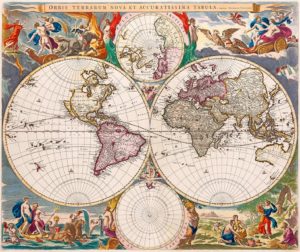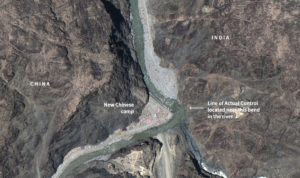DreamWorks movie upsets three countries, but China isn’t one
In its latest animated movie, Abominable, featuring the story of a Chinese girl who finds a yeti living on her roof, DreamWorks Animation has managed to outrage officials in three Southeast Asian countries. All because of a single image in one scene: The nine-dash line.

Photo credit: The China Project illustration
DreamWorks upsets three countries with one image
In its latest animated movie, Abominable, featuring the story of a Chinese girl who finds a yeti living on her roof, DreamWorks Animation has managed to outrage officials in three Southeast Asian countries. All because of a single image in one scene: The nine-dash line.
What is the nine-dash line?
China claims a gigantic swath of ocean to its south as its territorial waters, but this claim conflicts with the maritime claims of Vietnam, Malaysia, and the Philippines, among others. China’s claim, which was rejected by an international court the one and only time it was tested, is called the “nine-dash line” because official maps produced by Chinese state media typically use nine — sometimes 10 — dashes to indicate these waters belong to China. (Click here for a graphic of overlapping maritime claims in Southeast Asian waters.)
What happened with the movie?
DreamWorks refused to remove a scene where a map of China with the nine-dash line appears in the background, even after Malaysian authorities specifically requested an altered version. The movie’s release in that country was then canceled.
Earlier, Vietnam had banned the movie, and the Philippines foreign minister called for the scene to be cut and for the film to be boycotted.
Why was the nine-dash line even shown in this movie, when typically the only place you can see depictions of China that include it is in Chinese state media?
We do not know who exactly made the decision, but the film was a co-production with a Chinese entity, the Shanghai-based Pearl Studio. Such co-production deals between Chinese and Hollywood studios allow the resulting films to be distributed as local films, getting around restrictions on foreign-made films.
Self-censorship in Hollywood goes back a long time. To give three major examples: A Tibetan monk in Dr. Strange was replaced by a white actress, Tilda Swinton, to avoid any Tibet-related sensitivities; the sequel to Top Gun starring Tom Cruise omitted the flag of Taiwan on his jacket; and in Red Dawn, a remake of a Cold War–era movie, the Chinese army depicted invading the U.S. homeland was retroactively replaced with a North Korean army, after a leaked script was criticized by Chinese state media.





